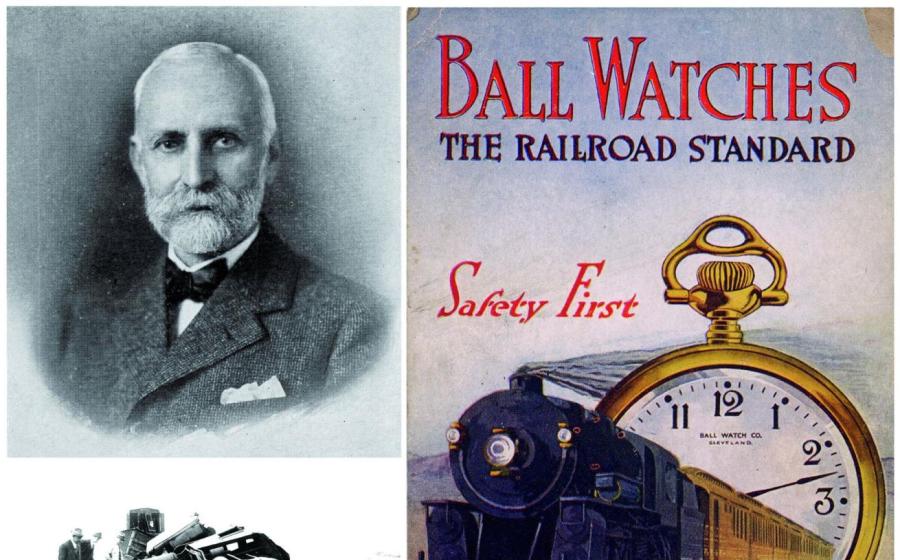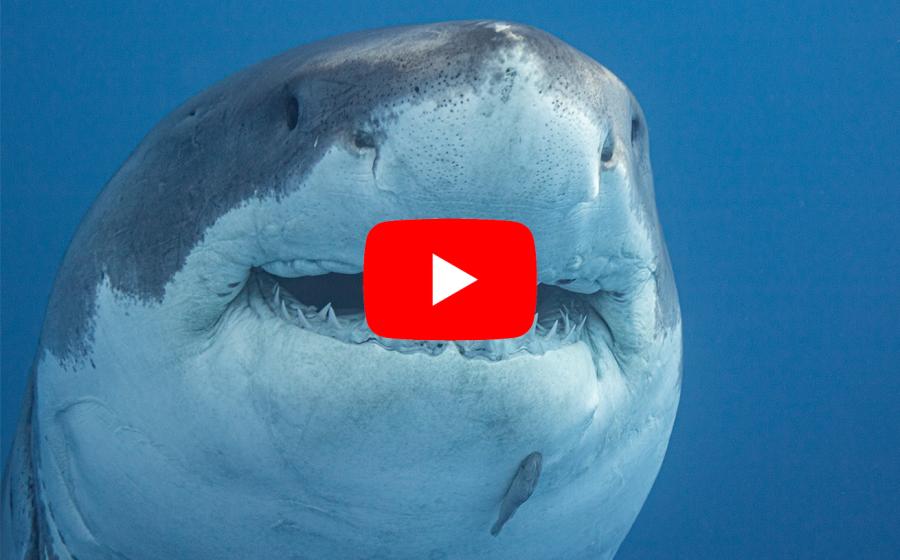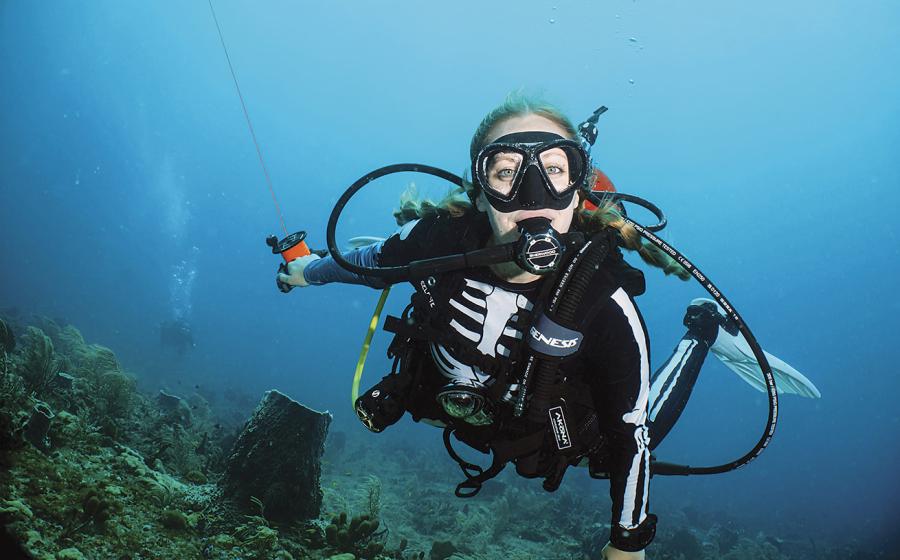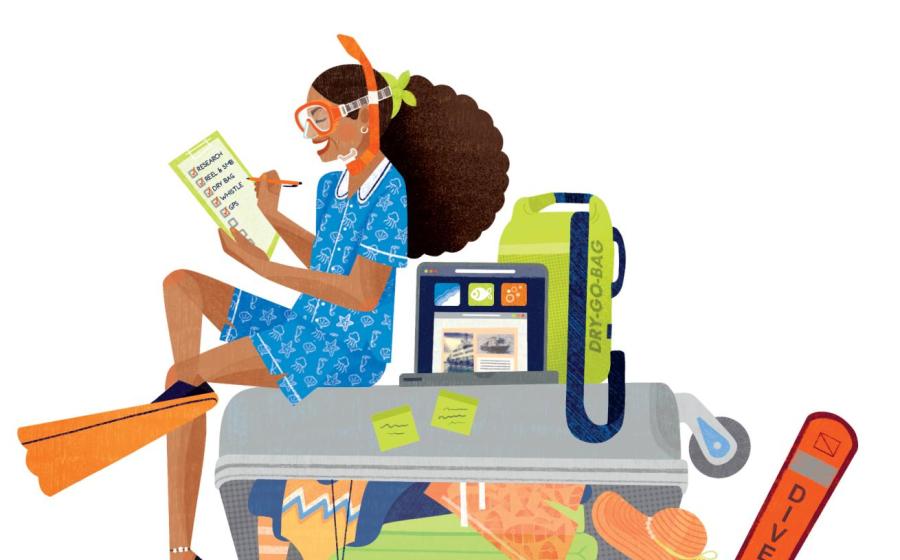Fail to Plan, Plan to Fail

Diver Elaine's Video Camera
Miko Maciaszek
This video was going to go viral — Elaine was sure of it. Using small, wide-angle cameras, she was recording the port side of a shipwreck; her buddy Matthew was doing the same on the starboard side. They had already planned to edit their videos together, giving viewers a stereo look at the shipwreck. Elaine was two-thirds of the way to the stern, nearly 150 feet down, when she realized she was almost out of air.
THE DIVER
At 47 years old, Elaine was in good shape. She dived at least once a month, and had a passion for underwater photography and videography. Both Elaine and Matthew had dived wrecks for several years, and each had logged hundreds of dives, together and separately.
THE DIVE
Conditions were perfect when the boat arrived at the dive site. There was a slight current on the surface, and during the briefing the divemaster said that this site typically had a stronger current on the bottom. He recommended that they stay sheltered behind the wreck’s structure so they wouldn’t be fighting the current throughout the dive. He also advised Elaine and Matthew to stay on the ship’s upper structure and watch their depth. The wreck rested on the sand at more than 160 feet, with the deck at 148 feet. The dive boat tied off to a permanent mooring buoy. Elaine and Matthew decided to stay close to the deck, and agreed they would each film one side of the ship so they could edit their footage together afterward. That way, the viewers would feel as if they were flying low across the ship and could see both sides of the wreck at once. To keep the audio as clear as possible, Elaine and Matthew agreed to turn off their dive-computer alarms. They didn’t want to record annoying beeping sounds.
THE ACCIDENT
The current crossed the wreck from port to starboard, putting Elaine directly in stream. She had to fight harder to stay close to the deck. Elaine had been at depth 16 minutes when she realized she was out of air. She looked for Matthew, but he was on the opposite side of the ship’s bridge and completely out of sight. There was no way she was going to get to him in time. Her only thought was getting back to the anchor line and the surface. In a panic, Elaine swam directly for the surface, but then angled toward the anchor line. She reached the line at 60 feet below the surface and met up with the divemaster. He realized Elaine was in trouble and tried to give her air from his alternate air source, but she refused his help. She was disoriented. The divemaster brought Elaine up the anchor line, still trying to get her to take his alternate air source. When they reached the surface, Elaine lost consciousness. The boat crew got her on board and began resuscitation efforts, but they were unsuccessful. Matthew surfaced a few minutes later without incident.

Shutterstock
ANALYSIS
It would be easy to say that Elaine died because she ran out of air and didn’t have an emergency plan in place. But panic also played a part: Upon realizing she was out of air, Elaine made poor choices that ultimately killed her. But neither conclusion tells the entire story. This accident began at the planning stage. Elaine and Matthew had spent time discussing their video plan but not their dive plan. They didn’t have an emergency protocol in place. Even though they were dive buddies, they planned to be separated and weren’t positioned to help each other in an emergency. A number of mistakes were made on this dive. For the production of this type of video, Elaine and Matthew should have taken the same precautions professional videographers utilize: Using two teams of divers and placing safety divers in the water who would have stayed shallow and kept an eye on both teams.
Elaine and Matthew had none of these. Elaine and Matthew also exceeded the recommended depth, and failed to plan for the depth properly by using appropriate breathing-gas mixtures and cylinders with increased gas capacity. They also intentionally separated, effectively making a solo dive during their deepest interval. However, neither diver had an independent spare air or pony bottle, and neither had training in solo diving. Finally, Elaine and Matthew turned off the dive-computer alarms that would have warned Elaine she was getting low on air, which sealed her fate. An autopsy was not performed, but this was most likely an air embolism. As Elaine ascended, she probably didn’t exhale adequately, causing the air in her lungs to expand and make its way into her brain. This would have caused confusion and strokelike symptoms and, finally, death. Like most dive accidents of this nature, this death was tragic but also avoidable.
Lessons for Life
• Plan the dive. Plan not only what to do on a dive, but also how to make it happen safely.
• Stay with your buddy. Or if you can't stay close enough to your buddy to give or receive aid in an emergency, get trained as a solo diver and carry the equipment you will need to care for yourself.
• Pay attention. Don't get so wrapped up in videography, wreck exploration or whatever else you are doing underwater that you forget the basics of monitoring your depth, time, and breathing-gas supply.
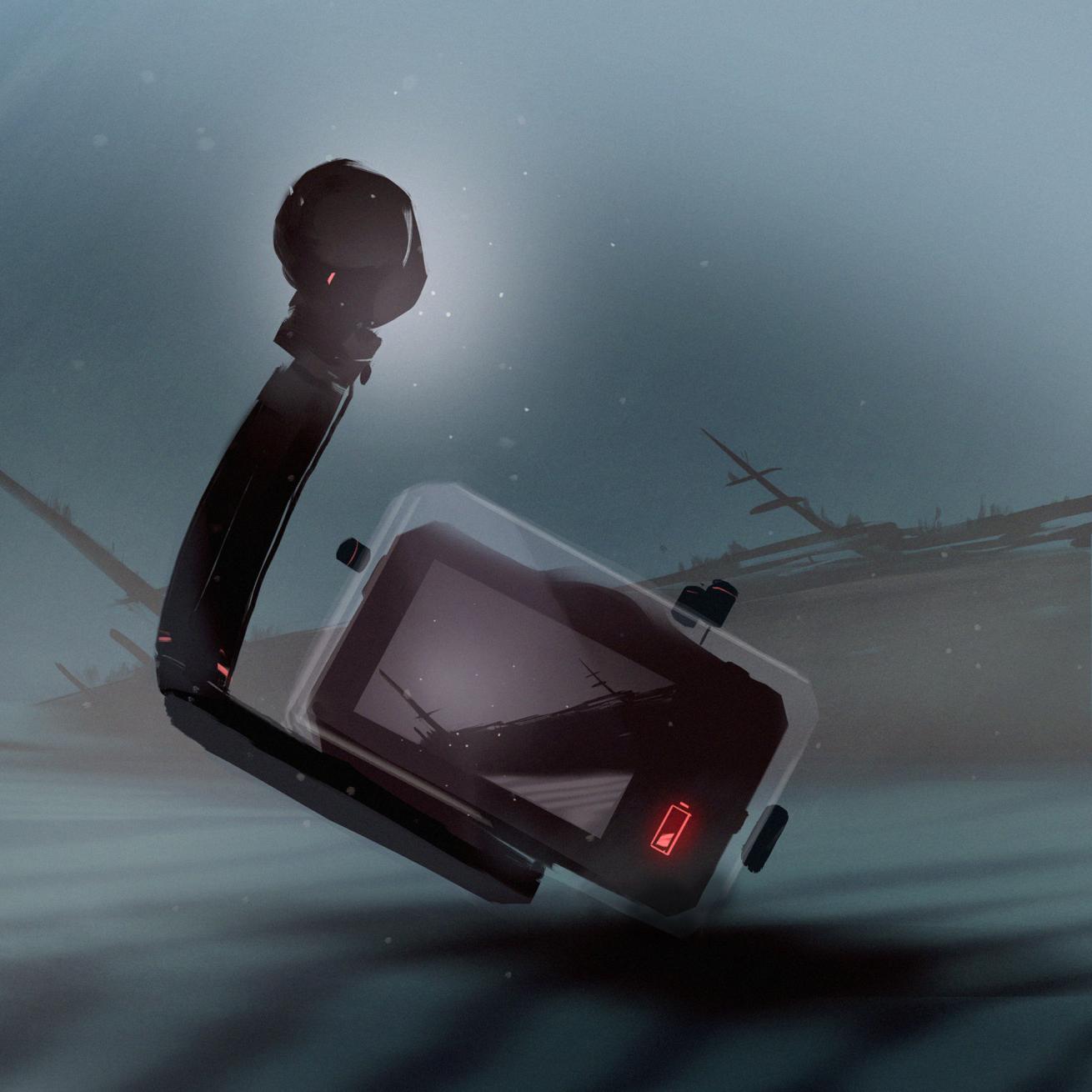
Miko Maciaszek
This video was going to go viral — Elaine was sure of it. Using small, wide-angle cameras, she was recording the port side of a shipwreck; her buddy Matthew was doing the same on the starboard side. They had already planned to edit their videos together, giving viewers a stereo look at the shipwreck. Elaine was two-thirds of the way to the stern, nearly 150 feet down, when she realized she was almost out of air.
THE DIVER
At 47 years old, Elaine was in good shape. She dived at least once a month, and had a passion for underwater photography and videography. Both Elaine and Matthew had dived wrecks for several years, and each had logged hundreds of dives, together and separately.
THE DIVE
Conditions were perfect when the boat arrived at the dive site. There was a slight current on the surface, and during the briefing the divemaster said that this site typically had a stronger current on the bottom. He recommended that they stay sheltered behind the wreck’s structure so they wouldn’t be fighting the current throughout the dive. He also advised Elaine and Matthew to stay on the ship’s upper structure and watch their depth. The wreck rested on the sand at more than 160 feet, with the deck at 148 feet. The dive boat tied off to a permanent mooring buoy. Elaine and Matthew decided to stay close to the deck, and agreed they would each film one side of the ship so they could edit their footage together afterward. That way, the viewers would feel as if they were flying low across the ship and could see both sides of the wreck at once. To keep the audio as clear as possible, Elaine and Matthew agreed to turn off their dive-computer alarms. They didn’t want to record annoying beeping sounds.
THE ACCIDENT
The current crossed the wreck from port to starboard, putting Elaine directly in stream. She had to fight harder to stay close to the deck. Elaine had been at depth 16 minutes when she realized she was out of air. She looked for Matthew, but he was on the opposite side of the ship’s bridge and completely out of sight. There was no way she was going to get to him in time. Her only thought was getting back to the anchor line and the surface. In a panic, Elaine swam directly for the surface, but then angled toward the anchor line. She reached the line at 60 feet below the surface and met up with the divemaster. He realized Elaine was in trouble and tried to give her air from his alternate air source, but she refused his help. She was disoriented. The divemaster brought Elaine up the anchor line, still trying to get her to take his alternate air source. When they reached the surface, Elaine lost consciousness. The boat crew got her on board and began resuscitation efforts, but they were unsuccessful. Matthew surfaced a few minutes later without incident.
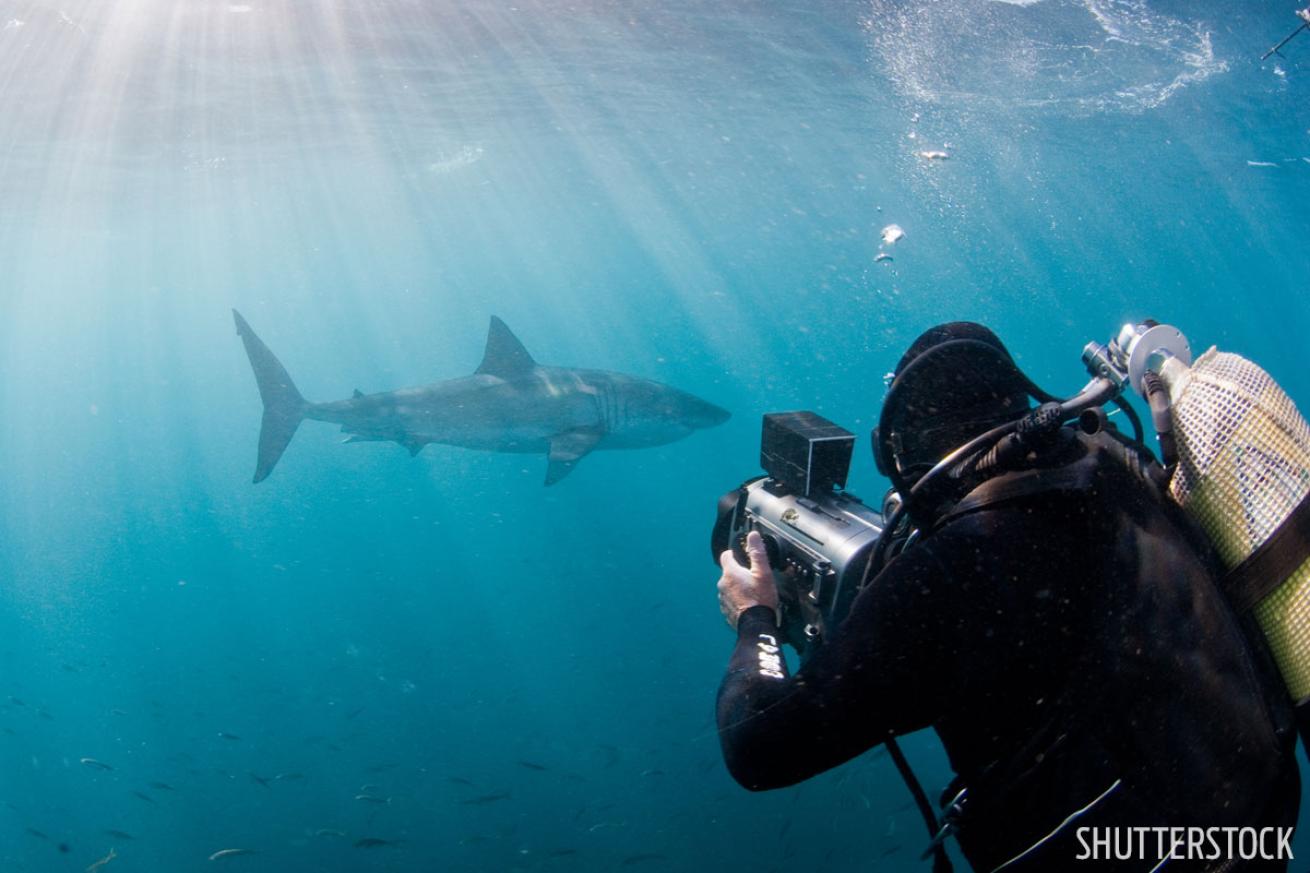
Shutterstock
ANALYSIS
It would be easy to say that Elaine died because she ran out of air and didn’t have an emergency plan in place. But panic also played a part: Upon realizing she was out of air, Elaine made poor choices that ultimately killed her. But neither conclusion tells the entire story. This accident began at the planning stage. Elaine and Matthew had spent time discussing their video plan but not their dive plan. They didn’t have an emergency protocol in place. Even though they were dive buddies, they planned to be separated and weren’t positioned to help each other in an emergency. A number of mistakes were made on this dive. For the production of this type of video, Elaine and Matthew should have taken the same precautions professional videographers utilize: Using two teams of divers and placing safety divers in the water who would have stayed shallow and kept an eye on both teams.
Elaine and Matthew had none of these. Elaine and Matthew also exceeded the recommended depth, and failed to plan for the depth properly by using appropriate breathing-gas mixtures and cylinders with increased gas capacity. They also intentionally separated, effectively making a solo dive during their deepest interval. However, neither diver had an independent spare air or pony bottle, and neither had training in solo diving. Finally, Elaine and Matthew turned off the dive-computer alarms that would have warned Elaine she was getting low on air, which sealed her fate. An autopsy was not performed, but this was most likely an air embolism. As Elaine ascended, she probably didn’t exhale adequately, causing the air in her lungs to expand and make its way into her brain. This would have caused confusion and strokelike symptoms and, finally, death. Like most dive accidents of this nature, this death was tragic but also avoidable.
Lessons for Life
• Plan the dive. Plan not only what to do on a dive, but also how to make it happen safely.
• Stay with your buddy. Or if you can't stay close enough to your buddy to give or receive aid in an emergency, get trained as a solo diver and carry the equipment you will need to care for yourself.
• Pay attention. Don't get so wrapped up in videography, wreck exploration or whatever else you are doing underwater that you forget the basics of monitoring your depth, time, and breathing-gas supply.







